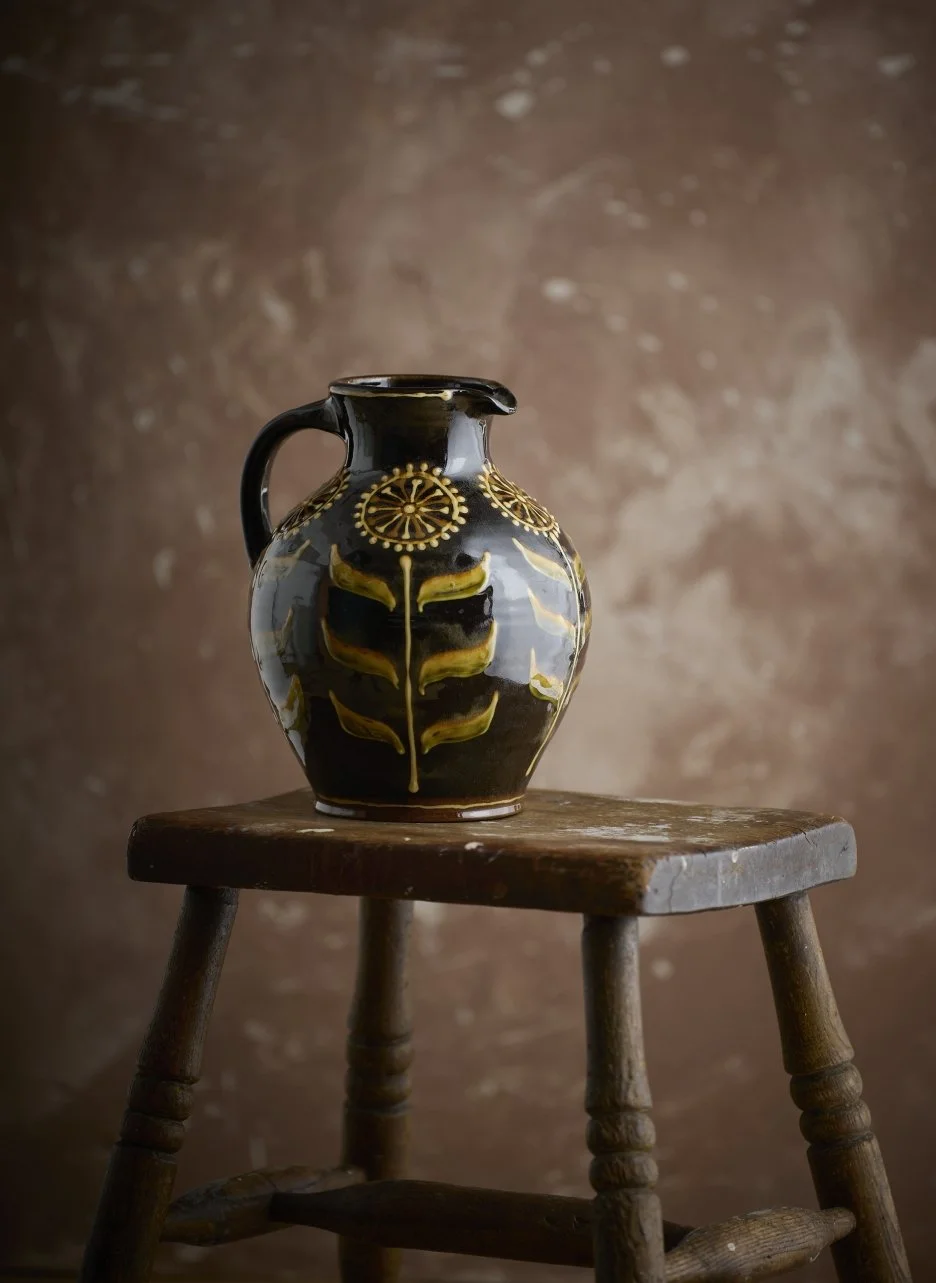W H A T I S S L I P W A R E ?
Slipware is pottery decorated with slip, a liquid clay, applied to the surface of a pot before firing. This slip can be poured, painted, dipped, trailed, combed, or scratched to create flowing patterns and images. Once glazed, usually with a clear or honey-coloured glaze, the decoration glows warmly through the surface. Known in French as barbotine and sometimes described as engobe when coloured, slip is one of the oldest decorative tools in ceramics.
While slip-decorated pottery appears across ancient cultures, the term "slipware" most commonly evokes the red-bodied earthenware of 17th- and 18th‑century England; pots from Staffordshire, Devon, the West Country, Wales, and Scotland. These were everyday objects: baking dishes, jugs, tygs, platters, harvest jugs. They were functional but full of character, adorned with folk motifs, dates, inscriptions, birds, flowers, and rhythmic abstract patterns.
Origins and Evolution
Slip decoration is ancient, but its most recognisable form evolved in early modern Britain. Rural potters working with local clays developed a distinctive visual language; scrolling slip-trailed lines, feathered zigzags, marbled surfaces, sgraffito imagery—that reflected both the tools of the trade and the stories of daily life.
By the late 19th century, industrial porcelain and creamware shifted tastes toward whiter, more uniform tablewares. Slipware, associated with the rural and the rustic, declined.
The 20th-Century Revival
Everything changed with the studio pottery movement. Bernard Leach and Michael Cardew saw value in the honesty and vitality of traditional English slipware. At St Ives and later Winchcombe, they revived these old techniques, combining them with a modern understanding of form and utility. Their work seeded the re‑emergence of slipware as a respected studio practice.
The Language of Slipware
Slipware has its own vocabulary, each technique creating a distinctive line or texture:
Slip – liquid clay used for coating or drawing.
Engobe – coloured slip used to change the clay body’s appearance.
Slip Trailing – thick slip applied through a nozzle or bulb, creating raised lines much like cake icing.
Feathering – dragging a tool or feather through contrasting slip lines to create flame-like patterns.
Combing / Marbling – pulling combs through layers of slip to form waves, zigzags, or marbled effects.
Sgraffito – scratching back through slip to reveal the clay beneath, often used for imagery or text.
This language produces surfaces that are warm, spontaneous, and connected to the hand of the maker.
The Rise of Contemporary “Heritage Potters”
Today, slipware is undergoing a revival. A new wave of potters, sometimes informally called heritage potters, are exploring, preserving, and re‑modernising this tradition.
These makers honour the lineage of 17th‑century country pottery and the 20th‑century Leach–Cardew revival, yet they bring to it contemporary scale, boldness, and storytelling. They work with local clays, earthenware bodies, wood-firing, and traditional motifs, while allowing their own voices to emerge through the forms and decoration.
Contemporary Slipware Potters
Here are a few potters whose work continues the tradition in fresh and exciting ways:






